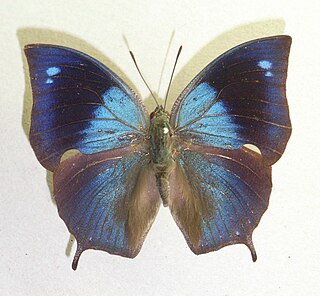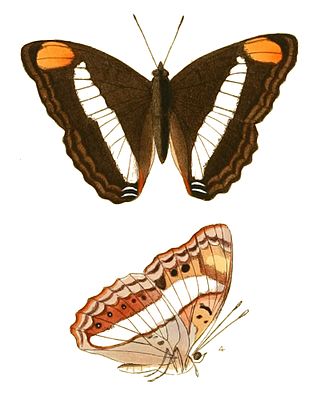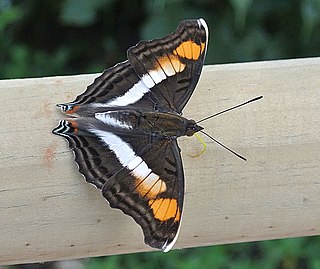
Papilio is a genus in the swallowtail butterfly family, Papilionidae, as well as the only representative of the tribe Papilionini. The word papilio is Latin for butterfly.

Danaus, commonly called tigers, milkweeds, monarchs, wanderers, and queens, is a genus of butterflies in the tiger butterfly tribe. They are found worldwide, including North America, South America, Africa, Asia, Indonesia and Australia. For other tigers see the genus, Parantica.

Eurytides is a genus of butterflies in the family Papilionidae, found in North, Central, and South America.

Gonepteryx is a genus of butterflies in the family Pieridae; there are about 15 species of Gonepteryx. They live in Europe, Asia, and Northern Africa. They are commonly known as brimstones for the bright yellow colour of the wings of most species. These share the same name as the much larger tropical genus Anteos. These inhabit much of central and South America and also North America. This species are known for being the kings of butterfly longevity. 10–13 months is the lifespan for many temperate species. Anteos, however, is much shorter lived. The adults will often mimic ivy leaves at rest. Male brimstone butterflies can withstand cooler temperatures and are able to fly after just 4 months in hibernation. Female brimstone butterflies need warmer climates to survive, and therefore are in hibernation longer. The male butterflies have a longer life span as they are more resilient to a wider range of temperatures, unlike the female.

Eunica is a genus of nymphalid butterflies found in the Neotropical realm.

Memphis, described by Jacob Hübner in 1819, is a Neotropical nymphalid butterfly genus in the subfamily Charaxinae.

Dismorphia is a genus of butterflies in the subfamily Dismorphiinae.

Adelpha is a genus of brush-footed butterflies found from the southern United States and Mexico to South America. They are commonly known as sisters, due to the white markings on their wings, which resemble a nun's habit. This genus is sometimes included with the admiral butterflies (Limenitis).

Doxocopa laurentia, the turquoise emperor or Cherubina emperor, is a species of butterfly of the family Nymphalidae, subfamily Apaturinae.

Doxocopa agathina, the agathina emperor, is a species of butterfly of the family Nymphalidae. It is found in the Guyanas, northern Brazil, and the Amazon region. It is also called the purple emperor but this name may also refer to the European butterfly Apatura iris.

Doxocopa laure, the silver emperor, is a species of butterfly of the family Nymphalidae.

Yphthimoides is a genus of satyrid butterflies found in the Neotropical realm.

Doxocopa pavon, the Pavon emperor or Pavon, is a species of butterfly in the family Nymphalidae. They can be found from Paraguay in South America up to Texas in the southern United States. They are generally brown in their overall coloration, with two bands of white straddling the middle of the upper surfaces of the wings, and a patch of orange on the tips of their forewings. The upper surfaces of the wings of the males are overlaid by an iridescent blue-purple sheen. The females of the species closely resemble members of the unrelated genus Adelpha.

Altinote is a genus of butterflies from South America of the subfamily Heliconiinae in the family Nymphalidae. For taxonomic problems regarding this group, see Acraea.

Doxocopa cyane, the Mexican emperor or cyan emperor, is a species of butterfly of the family Nymphalidae.

Doxocopa linda, or Linda's emperor, is a species of Neotropical butterfly in the family Nymphalidae and subfamily Apaturinae. It was described by Cajetan Felder and Rudolf Felder in 1862. It is found in Peru, Ecuador and the Brazilian state of Amazonas.

























